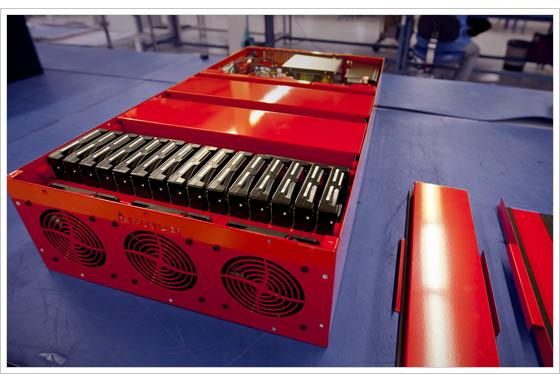Backblaze Publishes Third Storage Design
Backblaze has released a third set of designs for its StoragePod—contributing to a broader trend of releasing enterprise hardware designs to the community at large. Backblaze’s StoragePod 3.0 features a chassis redesigned to make it easier to service, as well as a variety of component upgrades. As with StoragePod 2.0, Backblaze has posted a precise component list, complete with pricing down to the screws. Backblaze provides backup services for both consumers and businesses, using a small app to back up everything on a user's Mac or PC (save for the OS and applications) for $5 per device per month. All of the data is stored in the Backblaze datacenter, where it can be restored either online or by sending a USB drive to the consumer in the case of a catastrophic emergency. Backblaze is one of a small number of vendors who are publishing their designs to the Web, including Etsy, which issued details of its data-center design last September. Facebook and its Open Compute Project is another notable example; the project retains a number of hardware designs for public download. The Backblaze StoragePods were designed to hold large amounts of data, accessible in seconds to minutes, and purpose-built for bulk storage. Vanderbilt University, The Geographic Information Network of Alaska and even Netflix have built StoragePods for their own use. Backblaze does note that the cost of storage has increased. That’s due in large part to the continuing fallout from the catastrophic Thai floods of a little more than a year ago. Those floods wiped out manufacturing for several component makers whose products go into hard disks, especially those made by Western Digital. As a result, drive prices skyrocketed, forcing Backblaze on a nationwide quest to "harvest" drives from external drives offered by Costco and Best Buy, ripping them out of their assembly and installing them in their own StoragePods. (Fortunately, drive prices have since decreased.) Backblaze offers several pieces of advice to those interested in building their own StoragePods. It has tested the individual components together, demonstrating that they work—but those that decide to go with alternatives may pay the price. Because of that, Backblaze advises buying spares. "Just when you get comfortable with a part, it will be discontinued or upgraded," the company noted. "We buy in quantity, we buy spares, and we have substitutes ready to go at any time. We also look for parts that have long-term support policies. We realize you may not be able to do these things, so be prepared when you upgrade one component that something may break." Also be aware that, although designers may use them, some components aren't purpose-built for the data center. Most high-end power supplies are designed to deliver most of their power on the 12V rail, because that’s what high end gamer PCs use, Backblaze warned. Unfortunately, hard drives draw a lot of power off the 5V rail and can easily overwhelm a high-wattage power supply. And when all else fails, Backblaze offers the time-honored advice: keep it simple. "By keeping things simple you reduce the number of variables that need to be considered if things go wrong," the company said. Image: Backblaze


